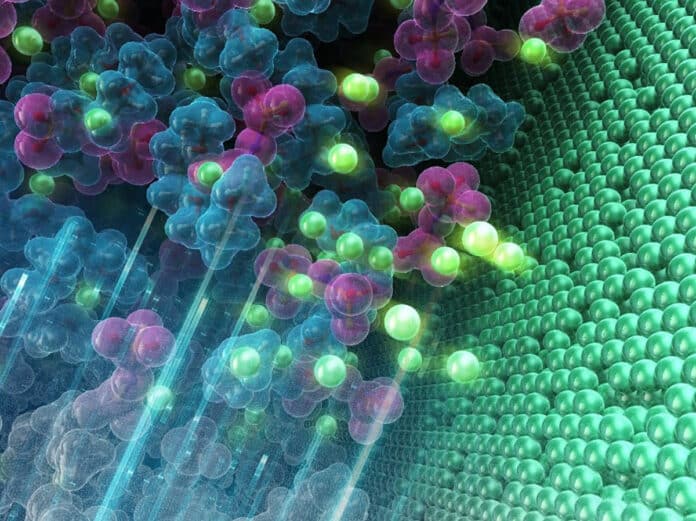Lithium-metal batteries are a promising technology to address the emerging demand for high-energy-density storage systems. However, their cycling encounters a low Coulombic efficiency (CE) due to the unceasing electrolyte decomposition. A battery with high Coulombic efficiency has a longer battery cycle life.
Now, a team of researchers has discovered a new mechanism to stabilize the lithium metal electrode and electrolyte in lithium metal batteries. This new mechanism, which does not depend on the traditional kinetic approach, has the potential to greatly enhance the energy density of batteries.
The high reactivity of lithium metal reduces the electrolyte at its surface, thereby leading to the degradation of lithium metal battery performance. To overcome this issue, scientists have developed functional electrolytes and electrolyte additives to form a surface protective film. This solid electrolyte interphase has an impact on the safety and efficiency of lithium batteries, but this was still not efficient in preventing certain severe side reactions.
The surface protective film prevents direct contact between the electrolyte and lithium metal electrode, thereby kinetically slowing the electrolyte reduction. Yet, until now, scientists have not fully understood the correlation between the solid electrolyte interphase and Coulombic efficiency.
In the current study, researchers stabilized the lithium metal and electrolyte by designing the electrolyte to provide upshifted oxidation-reduction potential of lithium metal, thus succeeding in weakening the reaction activity of lithium metal thermodynamically, which could help achieve better battery performance. This strategy has rarely been applied in developing batteries with lithium metal.
“The thermodynamic oxidation-reduction potential of lithium metal, which varies significantly depending on the electrolytes, is a simple yet overlooked factor that influences the lithium metal battery performance,” said Atsuo Yamada, a professor in the Department of Chemical System Engineering at the University of Tokyo.
The team studied the oxidation-reduction potential of lithium metal in 74 types of electrolytes. They introduced a compound called ferrocene into all the electrolytes as an IUPAC (International Union of Pure and Applied Chemistry)-recommended internal standard for electrode potentials. The researchers proved that there is a correlation between the oxidation-reduction potential of lithium metal and the Coulombic efficiency. They obtained a high Coulombic efficiency with the upshifted oxidation-reduction potential of lithium metal.
In future work, the research team’s goal is to unveil the rational mechanism behind the oxidation-reduction potential shift in more detail. “We will design the electrolyte guaranteeing a Coulombic efficiency of greater than 99.95%. The Coulombic efficiency of lithium metal is less than 99%, even with advanced electrolytes. However, at least 99.95% is required for the commercialization of lithium metal-based batteries,” said Atsuo Yamada.
“This is the first paper to propose electrode potential and related structural features as metrics for designing lithium-metal battery electrolytes, which are extracted by introducing data science combined with computational calculations. Based on our findings, several electrolytes, which enable high Coulombic efficiency, have been easily developed,” said Atsuo Yamada.
Journal reference:
- Seongjae Ko, Tomohiro Obukata, Tatau Shimada, Norio Takenaka, Masanobu Nakayama, Atsuo Yamada and Yuki Yamada. Electrode potential influences the reversibility of lithium-metal anodes. Nature Energy (2022); DOI: 10.1038/s41560-022-01144-0
